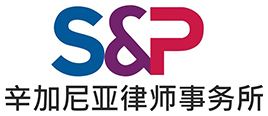In the gamut of sound and systematized international arbitration, an emergency relief is often described as an Achilles’ heel. Emergency Arbitration in the guise of an emergency relief is an upcoming concept in arbitration suitable for parties that cannot wait for the formation of an arbitral tribunal and want to protect their assets and evidence, which may, otherwise, be altered or lost. The efficacy of an EA, which a party invokes, depends on the following two factors:

Managing partner
Singhania & Partners
1. Fumus boni iuris – Reasonable possibility that the requesting party will succeed on merits.
2. Periculum in mora – If the measure is not granted immediately, the loss would not and could not be compensated through damages.
SIAC – The Torchbearer. The Singapore International Arbitration Centre was the first Asian institution to introduce EA provisions in July 2010, making it an international leader in the number of such cases handled. The following procedures, among others, must be adopted when a party chooses the EA option:
- Application in writing to the registrar.
- Filing of proof of serving such an application on the opposite party.
- Payment of the decided fee, based on the schedule for each centre, where such arbitration is to be carried out with an implicit understanding that the application of EA would be limited to signatories to the arbitration agreement or their successors.
Timeline. The president of the SIAC Court of Arbitration will appoint an emergency arbitrator within a day of deciding to accept an application for emergency relief. Challenge to the appointment of such an arbitrator must be made within two days of the registrar’s communication to the parties.

Senior Associate
Singhania & Partners
The emergency arbitrator has to provide a schedule for consideration of the application for emergency relief within two days of being appointed, giving all parties a reasonable opportunity to be heard.
Due to a strict timeline, the emergency arbitrator may never actually hear or consult with the parties apart from certain major clarifications and simply give his order, based on the documents and written submissions presented.
Timelines vary under various international arbitration rules, but a typical emergency arbitration takes around eight to 10 days from the date of application to the date of award.
The emergency arbitrator shall have the powers vested in the arbitral tribunal pursuant to these rules, including the authority to rule on his/her own jurisdiction, and may order any party to take such an interim measure of protection, as the arbitrator may deem necessary considering the subject matter of the dispute.
The nature of the interim orders include asset freezing, both prohibitive and mandatory injunctions, orders for the preservation and inspection of evidence, preventive orders to avoid misuse of intellectual property or confidential information, as well as anti-suit injunctions.
Global scenario. Presently, the SIAC, the Stockholm Chamber of Commerce (SCC), the Swiss Chambers Arbitration Institution (SCAI), the Mexico City National Chamber of Commerce (CANACO), and the Netherlands Arbitration Institute (NAI) provide for both expedited formation of the arbitral tribunal, as well as the EA. The Singapore International Arbitration Act has amended its definition of ‘arbitral tribunal’ to bring emergency arbitration within its ambit. Similarly, Hong Kong amended its Arbitration Ordinance with the insertion of Part 3A, which further allows the recognition and enforcement.
Indian scenario – Law commission’s report. In order to recognise emergency arbitrations and to give statutory recognition to SIAC Arbitration Rules, The Law Commission’s 246th Report on amendments to the Arbitration and Conciliation Act, 1996, proposed an amendment to Section 2(d) of the Act. However, the 2015 amendment failed to incorporate the recommendation of the Law Commission and does not provide at all for Emergency Arbitration.
India’s initiative towards EA. Although, Indian arbitral institutions are not statutorily cogent enough, they have framed rules largely synonymous to leading international arbitration institutional rules such as the Delhi International Arbitration Centre, the International Commercial Arbitration, the Madras High Court Arbitration Center Rules, 2014, and the Mumbai Centre for International Arbitration (Rules) 2016.
Enforcement in India. Enforcement of a foreign seated award in India is highly unlikely as the enforcement can only be recognised under Part II of the Arbitration and Conciliation Act, 1996. In accordance with the decision of the Supreme Court of India in BALCO v Kaiser Aluminum Technical Services, the powers of Indian courts are prospectively excluded to grant interim relief in relation to foreign seated arbitrations. However, India’s approach towards an EA order is that of ancillary enforceability, wherein the judicial decisions are scant. In the leading cases of HSBC v Avitel, and Raffles Design International India and Others v Educomp Professional Education and Others, the Bombay High Court and the Delhi High Court, respectively, have emerged as exponents wherein the courts granted interim relief in sync with the order of the emergency arbitrator.
CONCLUSION
The emergency arbitrator’s order shall take the form of an interim award, with which the parties undertake to comply. If a party fails to comply with such an order, it may be enforceable in nature under the provisions of various national laws, depending on the discretion of national courts and national laws that may or may not include EA provisions.
Ravi Singhania is managing partner and Kanika Tandon is a senior associate at Singhania & Partners

Singhania & Partners LLP, Solicitors and Advocates
P-24 Green Park Extension
New Delhi 110016, India
Tel:
+91 11 4747 1414
E-mail:
ravi@singhania.in
kanika@singhania.in
www.singhania.cn





















